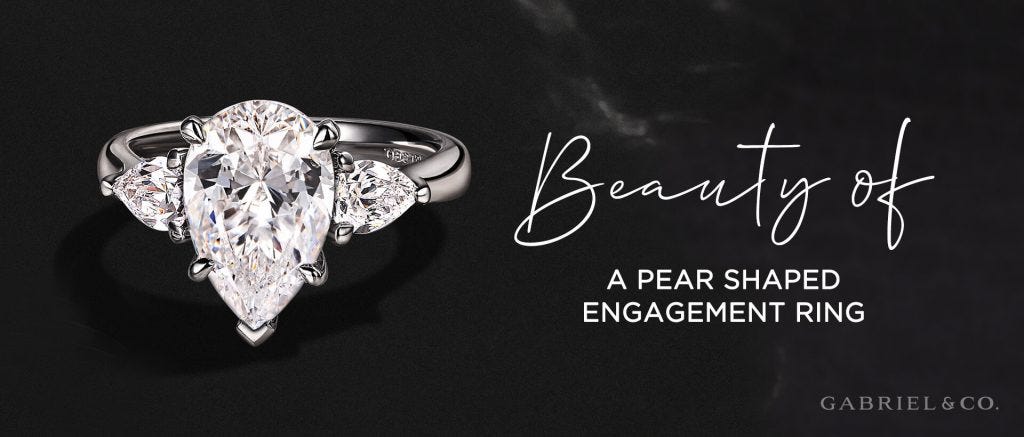The History of the Pear-Shaped Diamond?

Diamonds look ethereal irrespective of the cut and shape. All cuts have individual attributes that make them attractive — whether it is a simple round cut, a fancier cushion, or a princess cut. Pear-shaped diamonds look beautiful in engagement rings. They are elongated in shape and make your fingers look slimmer and longer. But wait, what exactly is the pear shape?
What Is a Pear-Shaped Diamond?
We get the beautiful pear shape by combining the brilliant round cut of a diamond with the stunning marquise drop. One end of this shape is round, which tapers off to a pointed marquise at the other end. Featuring a total of 58 facets, the shape is distinguished for its brilliance and sparkle. It is full of paradoxes in its appearance –symmetric yet irregular, classic yet modern, delicate yet sharp. But one thing is for sure! With its innocent looks, this teardrop-like shape always looks charming as the center stone on an engagement ring.
A pear-cut gem is flexible in size, shape, and color — everything about it is customizable to fit individual preferences. What makes the shape further fascinating is the array of symbolism behind it. With so many positives in its favor, it is hard not to fall for a pear-shaped diamond engagement ring. If you’re enthusiastic about having this beauty, let us get you better acquainted with this charismatic diamond shape!
The History of the Pear-Shaped Diamond
To know the origins of this shape, let’s go back to the mid-15th century in Flanders. The year was 1475 when Lodewyk van Bercken, a Flemish (now Belgium) diamond cutter, invented Scaif. It was the polishing wheel that sped up the process of shaping diamonds. This wheel helped discover several unique diamond cuts, including the now much-loved pear cut. He cut the diamond in an intricate pattern of 58 stunning facets. While the other shapes have evolved, the teardrop style is still cut exactly the same, in 58 facets.
Today, even after more than 500 years, pear-shaped diamonds are loved and pursued like never before. In fact, a symbolic blood bath took place over a distinctive pear-shaped diamond in 1969. The gem is the now infamous 68-carat Taylor-Burton diamond. Keeping aside its competitive history, Richard Burton finally won the diamond at the 1969 public auction. He fought to covet the diamond to gift it to his wife. In his diary, he wrote, “I wanted that diamond because it is incomparably lovely … and it should be on the loveliest woman in the world”.
This obsession with the diamond only strengthens the belief that pear-shaped diamonds symbolize love and relationships. Or maybe, the Taylor-Burton diamond started it all?
Conclusion
The pear shape’s rare and intricate design makes it truly sui generis or unique. At Gabriel & Co., these pear-shaped engagement rings are endowed with brilliant beauty, a heavenly aura, and emotional quality, a staple in every Gabriel piece. Propose to your partner with any of these pear-shaped diamonds, and we guarantee the ring will be her most prized possession forever!


Comments
Post a Comment